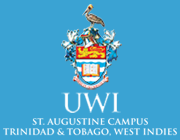Languages of the Caribbean

In the Americas, there are over 1,000 languages. Of these, over 70 are in use across the 29 territories of the Caribbean, including both the Caribbean archipelago and continental areas. The official languages of the Caribbean are English, Dutch, French, Haitian, Papiamento/u, and Spanish.
Yet the Caribbean is much more than its official languages. Caribbean Linguistic groupings include:
-
Amerindian languages (23)
-
European languages (6), including 4 official ones and 2 immigrant ones (6)
-
African languages (2), with others having major impact on the Creole languages
-
Creole languages (23)
-
Asian languages (5)
-
Semitic languages (2)
-
Sign languages (more than 9), and
-
Religious and trade languages (3)
Caribbean linguists have been analysing and documenting Caribbean languages and language situations for several decades. Some heritage languages are almost totally extinct, and some almost dying, with few children as native language users. All are important.
All Caribbean languages have an immediate application to dictionary-making (including historical lexicography), formal education, language planning and policy-making, language learning and teaching, sustainable language and culture development, communication, creative-writing, issues of identity, heritage and ethnicity, nation-building, linguistic rights, and language revitalisation.
The benefits of learning languages and developing linguistic sensitivity include improved cognition, enhanced memory, flexibility, creative and critical thinking, problem-solving, a better grasp of one's own native language(s), good social attitudes to speakers of any variety, professional development, language advocacy, and much more.
To understand human language as an integral and inseparable part of human culture is to begin to understand issues of social and cultural identity.






